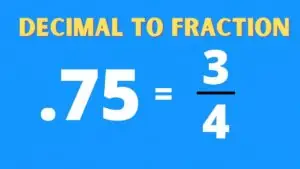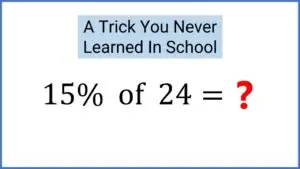In the realm of mathematics, the concept of estimation plays a significant role. It involves making approximate calculations or rounding numbers to the nearest value for the sake of convenience. Estimation allows us to quickly arrive at rough answers without the need for precise calculations. In this guide, we will delve deeper into the definition of estimation, explore examples of its applications, understand how to estimate in different scenarios, and highlight the benefits of using estimation in mathematical processes.

✅ AI Essay Writer ✅ AI Detector ✅ Plagchecker ✅ Paraphraser
✅ Summarizer ✅ Citation Generator
Estimation is the process of making a rough calculation of the actual value, number, or quantity. It is a valuable skill used in various real-life scenarios and mathematical applications. In mathematical terms, estimation involves approximating numbers to their closest whole values, tens, hundreds, or other place values, depending on the level of accuracy required.
Definition of Estimation and Examples
Estimation is best understood through practical examples. Let’s consider a few scenarios where estimation is commonly applied:
- Estimating Time: Imagine Sara walks to school from home, and she wants to estimate the time it takes. She knows it is around 10 minutes, but she doesn’t need an exact measure. So, she estimates that it takes about 10 minutes to reach school.
- Estimating Quantity: At an event, someone asks you how many people are expected to attend the concert. You know it’s a large event, and instead of providing an exact count, you estimate that around 1000 people will be present.
- Estimating Distance: You plan a road trip from New York to San Francisco, and you want to have a rough idea of the distance. You estimate that the distance between the two cities is approximately 2900 miles.
Rounding Numbers for Estimation
One of the most common methods of estimation is rounding off numbers. Rounding involves changing a number to a less exact but more convenient value for calculations. Let’s explore how to round numbers in different place values:
a) Rounding to the Nearest Whole Number: When rounding to the nearest whole number, you examine the digit in the tenths place. If the digit is 5 or greater, you round the number up; otherwise, you round it down.
Example: Round 5.6 to the nearest whole number. Solution: The tenths place is 6, which is greater than 5. So, rounding up, we get 6.
b) Rounding to the Nearest Ten or Hundred: Similarly, you can round numbers to the nearest ten or hundred by examining the ones or tens digit, respectively.
Example: Round 78 to the nearest ten. Solution: The ones place is 8, which is greater than 5. So, rounding up, we get 80.
The Importance of Estimation in Math
Estimation offers several advantages in mathematical calculations and problem-solving:
- Time-Saving and Efficiency: Estimating saves valuable time, especially in complex calculations involving large numbers. It provides a quick way to arrive at approximate answers without the need for lengthy computations.
- Checking Accuracy: Estimation can be used to check the accuracy of final answers. By quickly estimating the result, you can determine if your calculated answer is reasonable and within the expected range.
- Everyday Applications: Estimation is not limited to academic settings; it is an essential skill in everyday life. From budgeting expenses to planning travel time, we frequently use estimation to make informed decisions.
Estimation Techniques in Different Scenarios
Estimation can be applied to various mathematical scenarios. Let’s explore some common techniques for estimation in different contexts:
a) Estimation in Arithmetic Operations: In basic arithmetic operations like addition, subtraction, multiplication, and division, you can use compatible numbers to arrive at a quick and approximate solution.
Example: Multiply 37 and 24 using compatible numbers for estimation. Solution: Approximating 37 to 40 and 24 to 20, the estimation gives us 40 x 20 = 800.
b) Estimation with Large Numbers: When dealing with large numbers, you can round them to the nearest million, billion, or other place values for easier calculations.
Example: Estimate the population of a city, which is 8,752,309. Solution: Rounding to the nearest million, the estimated population is 9 million.
Estimation is an essential tool in problem-solving as it provides a starting point for finding solutions. By making educated guesses and approximations, you can simplify complex problems and devise plausible solutions.
Embracing Estimation in Real-Life Scenarios
Estimation is not confined to the boundaries of the classroom; it is deeply integrated into our daily lives.
- Financial Planning: When planning a budget, estimation helps to forecast expenses and allocate resources wisely.
- Time Management: Estimating the time required for tasks allows for efficient time management and scheduling.
- Decision Making: Estimation plays a role in decision-making processes, whether it’s buying groceries, determining the amount of materials needed for a project, or estimating the cost of a trip.
Conclusion
Estimation is a valuable skill that enables us to make informed decisions and quick approximations in various mathematical and real-life scenarios. Whether it’s determining the number of people attending an event, calculating distances, or planning finances, estimation simplifies the complexities of mathematics and everyday life. By embracing estimation, we become better problem-solvers, efficient decision-makers, and overall, more confident in our mathematical abilities.
FAQ
Why do we use estimation in math?
Estimation is used in math for various reasons. It allows us to quickly arrive at approximate answers without the need for complex calculations, saving time and effort. Estimation is practical in real-life scenarios where precise values may not be necessary, but a rough idea is sufficient for decision-making. It also helps in checking the accuracy of final answers and serves as a valuable tool in problem-solving.
What are some examples of estimation in everyday life?
Estimation is an integral part of our daily lives. Some common examples include estimating the time it takes to reach a destination, approximating the cost of items while shopping, and guessing the number of people attending an event. When cooking, we may estimate ingredients, and in financial planning, we estimate expenses and budget allocation. Estimation is also used in determining travel distances and evaluating project timelines.
What are the benefits of using estimation in calculations?
Using estimation in calculations offers several benefits. It simplifies complex arithmetic operations, especially with large numbers, and provides quick answers. Estimation helps in checking the reasonableness of final results and can catch errors or outliers in calculations. It promotes efficiency and time-saving in problem-solving and decision-making processes, both in mathematics and real-life scenarios.
How do you estimate in math?
To estimate in math, you use rounding techniques. Rounding involves changing a number to a less precise, but more convenient value, such as rounding to the nearest whole number or to a specific place value (e.g., nearest ten or hundred). By looking at the digit to the right of the desired place value, you decide whether to round up or down to arrive at an approximate answer.
What are the general rules for rounding numbers in estimation?
The general rules for rounding numbers in estimation are as follows:
- If the digit to the right of the desired place value is 5 or greater, round the number up.
- If the digit to the right is less than 5, round the number down.
- When rounding to the nearest whole number, round 0.5 up to 1.
- When rounding to the nearest ten, hundred, etc., round 5 or greater up to the next multiple of that place value.
How does estimation improve accuracy in math problems?
Estimation improves accuracy in math problems by providing a rough idea of what the answer should be. It allows you to check the reasonableness of your calculated result and quickly identify potential errors. By using estimation as a guide, you can catch mistakes early and make necessary adjustments to arrive at a more accurate solution. Estimation acts as a valuable tool to verify the correctness of final answers in various mathematical scenarios.
Follow us on Reddit for more insights and updates.





Comments (0)
Welcome to A*Help comments!
We’re all about debate and discussion at A*Help.
We value the diverse opinions of users, so you may find points of view that you don’t agree with. And that’s cool. However, there are certain things we’re not OK with: attempts to manipulate our data in any way, for example, or the posting of discriminative, offensive, hateful, or disparaging material.